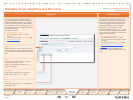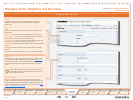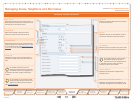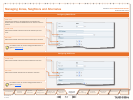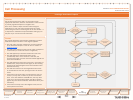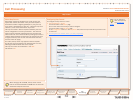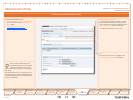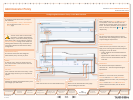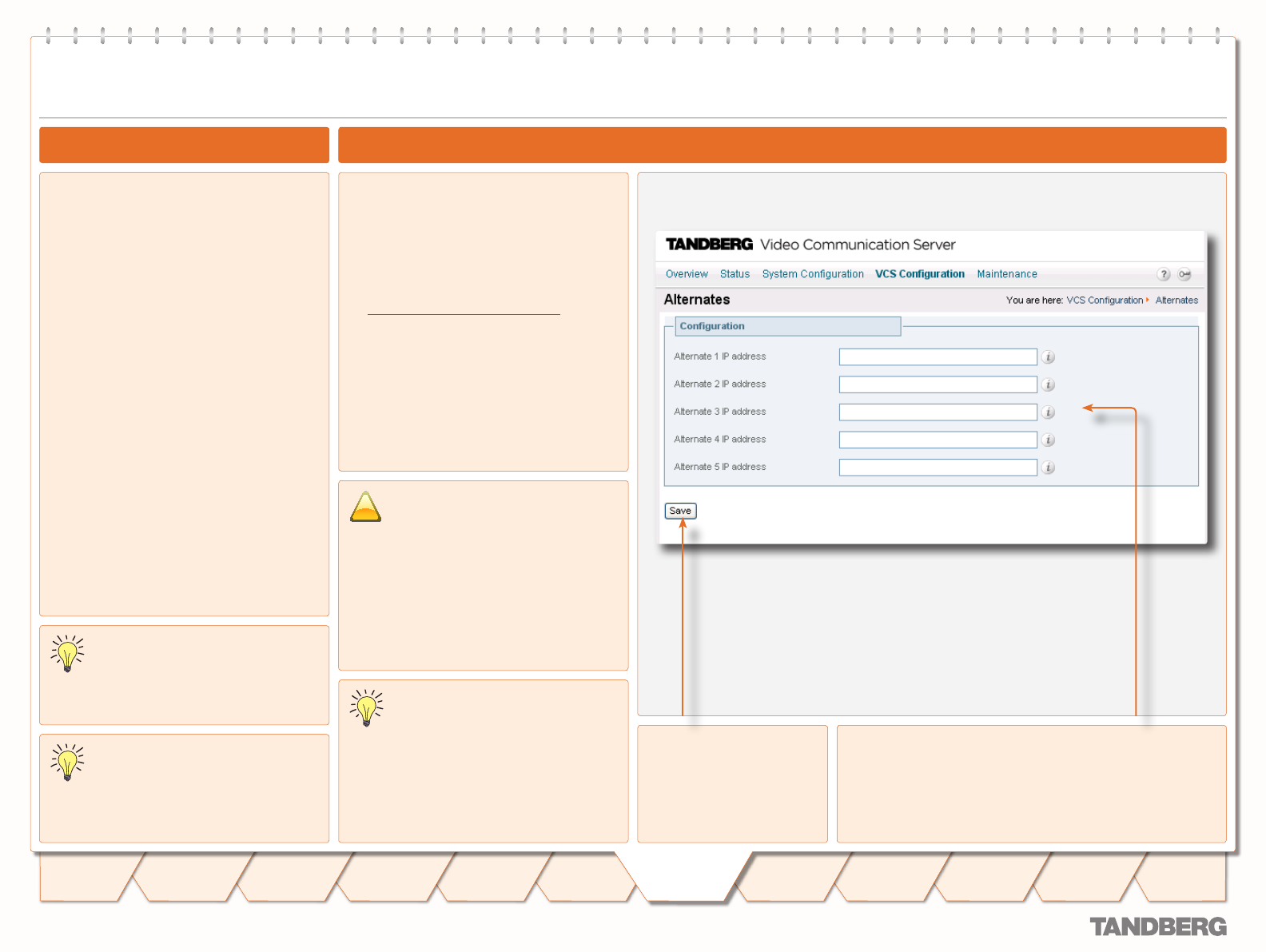
D 14049.01
07.2007
58
D 14049.01
07.2007
58
Introduction
Getting
Started
System
Overview
System
Configuration
H.323 & SIP
Configuration
Registration
Control
Zones and
Neighbors
Call
Processing
Firewall
Traversal
Bandwidth
Control
Maintenance
Appendices
Zones and
Neighbors
The purpose of an Alternate is to provide extra
reliability.
Each VCS can be part of a pool of up to 6
Alternate VCSs that act as backups to each
other in case one becomes unavailable (for
example, due to a network or power outage).
All the Alternates in a pool are configured
similarly and share responsibility for their
endpoint community. When an endpoint
registers with the VCS, it is given the
IP addresses of all the VCS’s Alternates. If
the endpoint loses contact with the initial
VCS, it will seek to register with one of the
Alternates. This may result in your endpoint
community’s registrations being spread over
all the Alternates.
When the VCS receives a Location Request,
if it cannot respond from its own registration
database, it will query all of its Alternates
before responding. This allows the pool
of endpoints to be treated as if they were
registered with a single VCS.
About Alternates
Each VCS can be configured with the IP
addresses of up to five other VCSs that will
act as Alternates should the current VCS
become unavailable.
To configure Alternate VCSs:
VCS Configuration > Alternates.
You will be taken to the Alternates page.
xConfiguration Alternates
•
•
Alternate 1 to Alternate 5 IP address
To configure another VCS as an Alternate, enter its IP address.
Up to 5 Alternates may be configured.
Save
Click Save to save your
changes.
Configuring Alternates
Alternates are not used to increase
the capacity of your network; they are
to provide redundancy. To increase
the capacity of your network, add one or more
additional VCSs and neighbor them together.
Alternates are periodically interrogated
to ensure that they are still
functioning. In order to prevent delays
during call setup, any non-functioning
Alternates will not receive Location Requests.
!
You must configure all Alternates in a
pool identically for all registration and
call features such as authentication,
bandwidth control and policy. If you do not do
this, endpoint behavior will vary unpredictably
depending on which Alternate it is currently
registered with. Alternates should also be
deployed on the same LAN as each other so
that they may be configured with the same
routing information such as local domain
names and local domain subnet masks.
When configuring your VCS with the
details of the system it will be using as
a traversal server, you are given the
opportunity to include details of any Alternates
of that traversal server. Adding this
information to your VCS will ensure that, if the
original traversal server becomes unavailable,
your VCS can use one of its Alternates
instead.
TANDBERG VIDEO COMMUNICATION SERVER
ADMINISTRATOR GUIDE
Managing Zones, Neighbors and Alternates





